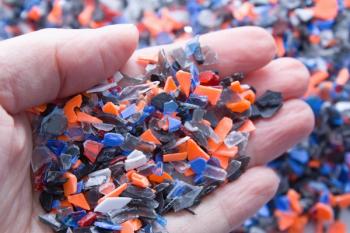
HPLC–UV Method Tested and Validated for Treating Fungal Nail Infections
Scientists from Brazil recently developed and validated a new high-performance liquid chromatography–ultraviolet method (HPLC–UV) for treating fungal nail infections.
Scientists in Brazil have developed and validated a new high-performance liquid chromatography-ultraviolet (HPLC-UV) method for treating fungal nail infections. The scientsts, most of whom come from the Universidade Federal do Rio Grande do Sul in Rio Grande do Sul, published this work in the Journal of Pharmaceutical and Biomedical Analysis (1).
Fungal nail infections, also known as “onychomycosis,” are common, affecting up to 14% of the general population (2). These infections can be caused by different environmental fungi which enter the skin through small cracks. Risk factors for onychomycosis include trauma, nail injuries, and a weakened immune system. However, fungal nail infections can be difficult to treat, and are most likely to dissipate when treated early. While topical treatments can be more convenient, the effectiveness of these topicals can be limited due to the highly complex keratinized structure of the nail plate that makes hard the penetration of exogenous compounds. As such, the scientists hoped to investigate the ungual and transungual delivery of potential active compounds to ensure the effectiveness of onychomycosis topical therapy.
In this study, the scientists investigated Aniba canelilla (Kunth) Mez, otherwise known as “precious bark,” is an aromatic tree that is widely distributed in the Amazon region. Aniba canelilla essential oil (ACEO), which presents 1-nitro-2-phenylethane (NP) and
For this study, the scientists aimed to develop, validate, and apply a high-performance liquid chromatography–ultraviolet method (HPLC–UV) to quantify NP and ME in both porcine hoof extract (PHE) and receptor fluid (RF) during in vitro permeation/retention studies in nail models. For these models, porcine hoof membranes were used. Two Designs of Experiment (DoE) were adopted for method development: 23 Full Factorial (which implies eight runs of the experiment) and Box-Behnken (which is an independent quadratic design in that it does not contain an embedded factorial or fractional factorial design) (3,4).
Read More:
Retention times of 5.65 for 7.49 min were achieved for NP and ME, respectively. The method was fully validated for NP and ME quantification in porcine hoof extract, considering the parameters and criteria of ICH M10 Guideline. With the nail model, in vitro permeation and retention studies were carried out, with the results being promising. NP reached the receptor fluid in the order of 441.1 ± 92.1 µg/cm2 at 72 h. The amount of NP and ME retained into porcine hoof membrane was 1272.6 ± 225.7 µg/cm2 and 84.7 ± 20.4 µg/cm2, respectively, at 72 h.
According to the scientists, their findings “open perspective to develop topical formulations containing ACEO as active compound aiming the management of onychomycosis” (1).
References
(1) Mineto, A. R.; de Matos, S. P.; Bordignon, I. M.; Ribeiro, R.; Apel, M. A.; et al. Development by Design of Experiment and Validation of a HPLC-UV Method for Simultaneous Quantification of 1-Nitro-2-Phenylethane and Methyleugenol: Application to Nail Permeation/Retention Studies. J. Pharm. Biomed. Anal. 2024, 239, 115889. DOI:
(2) Fungal Nail Infections. U.S. Department of Health & Human Services 2024.
(3) Two-Level Full Factorial Designs. National Institute of Standards and Technology 2024.
(4) Box-Behnken Designs. National Institute of Standards and Technology 2024.
Newsletter
Get essential updates on the latest spectroscopy technologies, regulatory standards, and best practices—subscribe today to Spectroscopy.




